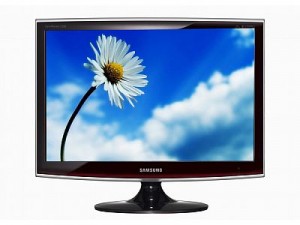L.C.D – Liquid Crystal Display
Liquid Crystal Display (LCD) is basically used to display pictures, used to show application status, display values, Program Debugging and more. For the first time Liquid Crystals were discovered in year 1888.LCD applications has reached wide range and number of varieties in the current scenario.
Very Common LCD applications:
I. Calculators
II.Watches
III.Clocks
IV.Telephones
General Applications of LCD’s:
i).Computer Monitors (Computer Screens)
ii).Instrument Panels
iii).Televisions
iv).Aircraft cockpit displays
v).Signage
Parts of Liquid Crystal Display:
LCD Panel is generally sandwiched between “Rear” and “Top” polarizer’s.
Polarizer main function is to improve the color and obviously making it possible to see the screens of LCD’s.So if we remove polarizer’s from LCD’s then undoubtedly it would be impossible to identify the letters or graphics and everything.
Following Figure shows LCD Panel, its parts
Liquid Crystal Display module shown in above figure is made up of “2 layers”. It contains a layer of “LC(Liquid Crystal) Material”. LC material is one through which Light passes, supplied by the Back light.
And White light from the back light place 2nd from the bottom in figure passes through the LCD panel which generally operates passage of light to form the Images projected on to the Mail Front of the LCD panel screen.
Kinds (Types) of LCD s:
LCD’s are classified in to Two Categories. They are namely
I. Field Effect Display (FED):
i).This kind of Field Effect Display contains “Front” and “Back” polarizer’s at right angles to each other.
ii).So these are placed 90° to each other
iii).Without electrical excitation, the light come through the “Front” polarizer is generally revolved 90° in the fluid
II.Dynamic Scattering Display (DSD)
i).This Dynamic Scattering Display consists of TWO pieces of glasses sandwiching a very thin layer of LC Material
ii).Inside faces of the Glass had a transparent conductive coating which is show GREEN in color in below figure
iii).So soon after voltage is applied, liquid crystal molecules shown in Yellow color gets realigned and move randomly
iv).It obviously creates “Turbulence”, disperses the light and ultimately led into “White Appearance”
WORKING of Liquid Crystal Display:
Kindly see and check the below Figure, while reading below instructions to understand its working very easily
1).Before understanding the Working Principle, one need to go through the parts which are available in the following figure
2).As a first process, generally the filter will naturally be polarized as the light strikes this Filter (B) at the beginning
3).So as shown in the figure, the light passes through each layer
4).Then it is guided on to the Next layer with the help of molecules (we have got an Idea regarding molecules as we discussed regarding them in Kinds of LCDs)
5).Obviously molecules tend to change the “Plane of Vibration of the Light” so as to match their its own angle
6).LC Molecules Principle:
i).When an electric current (voltage) is applied to molecules, they generally tend to Untwist
ii).So this basically causes a change in the light angle which passes through them
iii).Ultimately, there will be a change takes place in the angle of the top polarizing filter w.r.t it
iv).Then little light is allowed to pass through the area of LCD, then resulting the affected area becomes darker
7).When this light reaches the longer side (far side) of the LC substance, obviously it vibrates with the same angle similar to the final layer of molecules.
8).It may be noted that, the light is only allowed an entrance if the Second glass filter (polarized) matches with the final layer
9).Then finally the same image come from LC Layer would be resulting on the “Displayed Image” which will be appeared finally on the Screen
Advantages of Liquid Crystal Display:
i).LCD’s consume very low power typically of the order of “Micro watts” for the display
ii).So this low power consumption requirement has made it software designed for other types with MOS united logic circuit
iii).Cheap in price
Disadvantages of Liquid Crystal Display:
As every coin has both (two) sides, similarly every prospect has both Advantages and Disadvantages
i).Very limited range of operational temperature (around 0 to 55°C)
ii).So LCD’s cannot be used in temperatures beyond around 55 °C
iii).Ability of performance may be low & also short utilizing life
iv).One more additional component “Light Source” need to be placed
